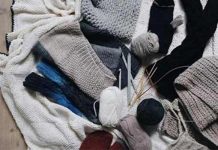Cashmere scarves are popular not only among ladies but also with the opposite sex as not only are they lightweight, they are also soft to the skin, quite durable and excellent sources of insulation especially during the winter time. The hairs are carefully gathered from 3 specific breeds of goats – Nepalese Pashmina or Chyangara, Kashmir goat or Changthangi and the Chegu. The undercoats of the goats are collected and handspun to cashmere fabrics.
The most expensive type of cashmere is gathered from the Changthangi goats located in the Kashmir mountainous region. These wools are expensive as the quality is finer than most wool fibers obtained from other goats and the goats are raised in harsh climates where temperatures during the winter can drop to -35C degrees. Once the hair is removed from the goats, the fabric is de-haired, separating the coarse hair from fine hair and then converted to fabric.
Determining Cashmere Scarves
The term “cashmere” is often interchanged with “pashmina” in the market today, since the difference between the two is minimal. To determine true cashmere, one should take a look at the fibre diameter with pashmina fibre being thinner and finer – about 11 to 14 microns – than general cashmere fibre. Another determining factor to genuine cashmere scarves is that these scarves are made only in Kashmir and Nepal as the fibers are delicate and weaved by master craftsmen manually.
Due to the popularity and demand for cashmere or pashmina, some shawls marketed today are made from manmade fabrics such as viscose or silk to meet the demand. They are often cheaper and less soft than real cashmere.



















